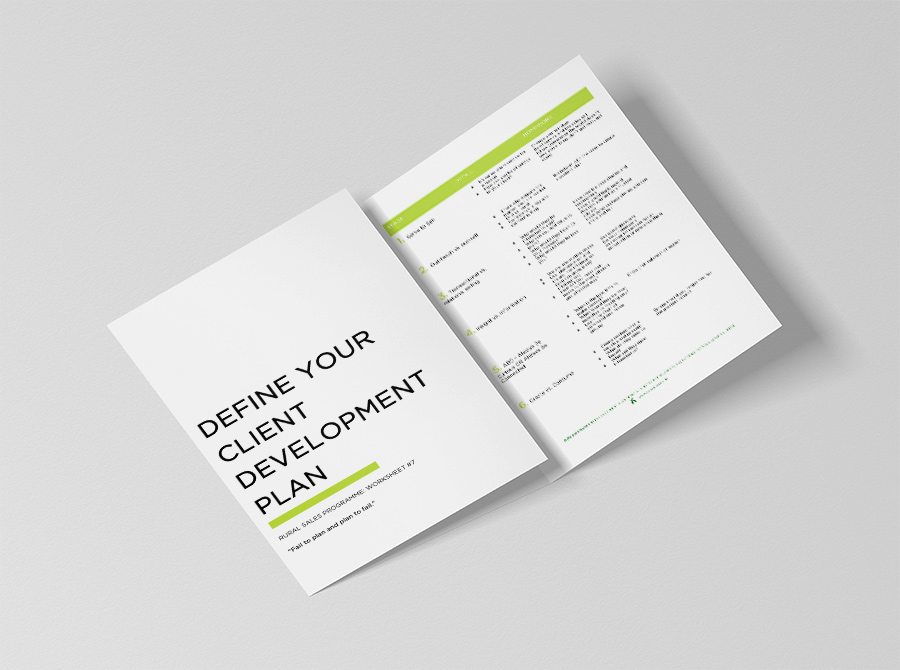Crack the Code: Master Buyer Personas to Boost Your Sales
In the world of rural sales, it’s easy to think that all buyers are alike. But here’s the truth: every buyer is different. You might have heard of personality assessments like Myers-Briggs or DISC profiles, but let’s face it — you don’t always get the luxury of those insights before meeting your customer. So, how can you adapt your sales approach in real time to land that sale?
You need to know the signs. While you might not have a full psychographic profile, there are clear signals that tell you exactly what type of buyer you’re dealing with. Understanding these signs and adjusting your approach is key to increasing your sales success.
To make it easy to remember, I’ve created a simple acronym, ABCDE, that breaks down five common buyer types. Let’s dive in.
1. The “Analytical” Buyer
Key Characteristic: This buyer is all about precision and facts.
When you encounter an analytical buyer, you need to be prepared for a deep dive. These buyers don’t rush decisions, so don’t try to push them. They are methodical and like to take their time to think things through. Think of them as the “deep thinkers” of the buying world. They want specifics—details about processes, stages, and outcomes. They’re not after fluff; they want to know how the deal stacks up from every angle.
They may come back with a barrage of questions. Don’t feel threatened. They aren’t trying to avoid the sale; they’re just gathering the information they need to make a rational, well-thought-out decision.
Key Signal: Silence. Analytical buyers use pauses to process what you’ve said. Don’t rush to fill the gap. Let them think.
Tip: Be patient and supportive. Speed doesn’t work here. A slow, steady approach wins their trust — and their sale.
2. The “Bought” Buyer
Key Characteristic: This buyer knows exactly what they want.
The “Bought” buyer is a rare gem. They’ve done their homework, and they know what they need. You don’t need to convince them; they’ve already made their decision. These buyers are prescriptive and will tell you exactly what they want. Your job is simple: listen, reflect back what they’ve said, and confirm that you’ve got it right.
Key Signal: They will specify exactly what they want. Don’t sell them — simply confirm what they’ve already decided. A quick summary is all it takes.
Tip: When dealing with a “Bought” buyer, focus on ensuring they feel heard and understood. Then, close the deal with minimal effort.
3. The “Commander” Buyer
Key Characteristic: This buyer is results-oriented and quick to make decisions.
The “Commander” buyer doesn’t have time to waste. They’re all about outcomes and want to know exactly what results they can expect from the purchase. Get straight to the point — skip the pleasantries and cut to the chase. They don’t want to hear about the weather or the market trends. They’re here to solve a problem, and they want to know how you can help them do that, fast.
Key Signal: They will often use “I” statements, like “I need this” or “I’m looking for results.” Their focus is on what they need, not your backstory.
Tip: Stay concise. Focus on the value they will get and the results they will achieve. Avoid talking about price or time — it’s all about the outcome.
4. The “Disinterested” Buyer
Key Characteristic: This buyer doesn’t feel any urgency to buy.
The “Disinterested” buyer is a tough one. They aren’t actively looking to make a purchase. Their pain is latent; they’re not feeling an immediate need to change. This is the buyer who’s happy to soldier on with the status quo and isn’t motivated to move forward.
Key Signal: They show no enthusiasm, no urgency. If they don’t disclose any pain points, it’s a red flag. They’re satisfied with what they have, and your efforts will be wasted.
Tip: Don’t waste your time here. Move on to other buyers who are more motivated to take action.
5. The “Enjoyable” Buyer
Key Characteristic: This buyer values relationships above all else.
“Enjoyable” buyers are the social butterflies of the buying world. They love building rapport and tend to be people-oriented. They’ll enjoy the transaction, but it’s important to them that you connect on a personal level. These buyers also consult with others before making a final decision, so be sure to factor in the buying committee.
Key Signal: They’ll ask for stories or examples from other satisfied customers. Social proof is crucial here.
Tip: Build a strong personal connection. Share testimonials and examples of past successes. Make them feel heard and understood, and make sure they know you’ve taken their concerns seriously.
Adapting Your Approach: The Power of Attunement
So, now you know the five types of buyers. The next challenge is adjusting your sales approach to each one. This is where the power of attunement comes into play.
Think of it like tuning a radio. If you’re not dialed into the right frequency, the signal is fuzzy and hard to understand. If you want to connect with your buyer, you need to “tune in” to their communication style.
Here’s how:
-
If they speak slowly, slow down your pace.
-
If they use visual language, incorporate words like “see” or “look” in your conversation.
-
If they’re kinesthetic, focus on how the product will “feel” or “work” for them.
-
If they’re auditory, pay attention to their tone and adjust yours accordingly.
It’s Not About You, It’s About Them
You’ve got to adapt to your buyer’s style. Too often, we default to speaking in our own language — shaped by our biases, upbringing, and experiences. But remember: not everyone thinks like you. Just because you connect with someone one way doesn’t mean you’ll connect the same way with someone else.
When you meet a buyer, don’t just sell them your product; sell them yourself — adapt to their needs and understand what makes them tick. That’s how you build trust.
By reading the signals and adjusting your communication, you can dramatically improve your sales results and leave your competitors behind.




